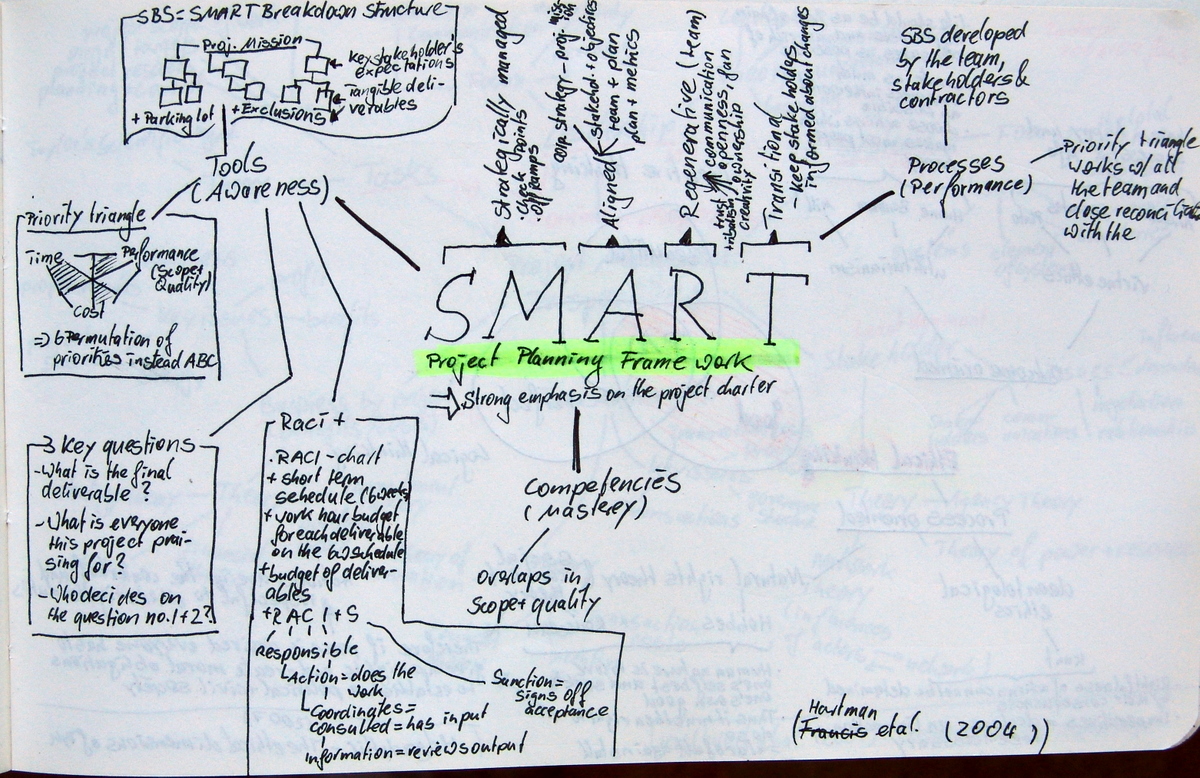
Hartman, Francis; Ashrafi, Rafi: Development of the SMARTTM Project Planning framework, in: International Journal of Project Management, Vol. 22 (2004), pp. 499-510.
Hartman & Ashrafi present a new trademarked framework for Project Planning. The idea behind this framework is to ensure that the project is SMART. Strategically Managed, Aligned with corporate strategy as well as stakeholder needs, Regenerative [sustainable] for the project team, and Transitional, which stands for smooth execution of changes to the project.
What is new? Four tools are presented by the authors (1) the SMART Breakdown Structure (SBS), (2) the priority triangle, (3) key questions, and (4) RACI+.
The SBS is basically a new take on the work break down structure. On the top-level is the project mission which is then broken down into the key stakeholders‘ expectations on the first level of decomposition. The next levels of decompositions break the expectations down to tangible deliverables. Furthermore they add a parking lot and an explicit list of exclusions.
The priority triangle extends the ABC-priority to 6 permutation of pairs of 2 priorities, e.g., Time (1st) and Cost (2nd); or Quality (1st) and Time (2nd).
The 3 key questions are (1) What is the final deliverable?, (2) What is everyone this project praising for?, and (3) Who decides the first two questions?
Finally the RACI+ chart (derived from the classical RACI „Responsibility, Accountability, Consult, Inform“-Matrix) clarifies the roles of each letter, R=responsible, A=action (does the work), C=consults (=has input, needs to be asked), I=informs (=reviews the output) and adds a new letter S=sanction (=signs-off acceptance).